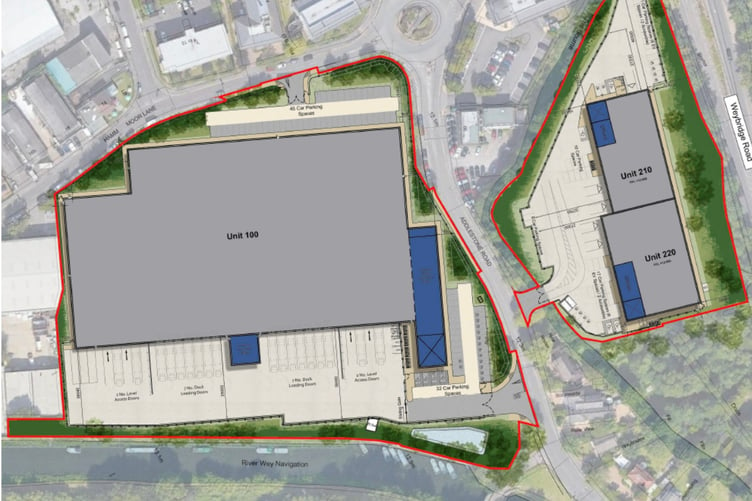PLANS to build almost 20,000 square metres of industrial buildings in Addlestone have been recommended for approval, despite the National Trust raising fears over its impact on the Wey conservation area.
This coming Wednesday, 22 March, the planning committee of Runnymede Borough Council will decide whether to approve plans to redevelop vacant buildings in the business park on Addlestone Road.
Residents consulted as part of the process have raised concerns over noise, particularly relating to the 24-hour operations of the proposed development and HGVs using the site.
The cumulative impact on congestion, including when the rail barriers are down in Addlestone, was also flagged.
The largest of the proposed buildings, at 14,258sqm, would replace the current offices and include 14 docks for heavy goods vehicles as well as an additional four HGV parking spaces.
Two further buildings would be built to the north of the site, taking up a combined 3,236 sqm and standing 15 metres tall with five spaces for larger vehicles.
Across the whole site there would be parking for 131 cars.
The National Trust has said it fears the building would be visible in views along the Wey Corridor and impact adversely on the appearance of the conservation area.
The Trust was also deeply worried about the impact of noise.
Writing to the council’s planning committee, the Trust said: “Of perhaps greater concern is the adverse impact of vehicle noise on the amenities currently enjoyed by boat users on the navigation, passing through and at the moorings, and by pedestrians and cyclists using the towpath.
“Given the likelihood of 24-hour operations, the Trust remains to be convinced that acoustic fencing would be sufficient to attenuate noise to an acceptable level at night-time.
“Unless additional measures can be incorporated to reduce night-time noise levels it is likely that the occupiers of residential boat moorings on the Wey Navigation would experience disturbance and significant loss of amenity.
“The National Trust remains concerned about the potential for light pollution along the Navigation, a concern exacerbated by the proposed siting of the service yard along the Wey Navigation frontage.
“Enhanced lighting close to the Navigation would be detrimental to its night-time character and may be prejudicial to bats along the waterway.”
Officers have said the development was acceptable and would bring previously developed land into an employment-generating use and provide intensification of use to deliver increased employment floorspace.
They added that light pollution could be mitigated.





Comments
This article has no comments yet. Be the first to leave a comment.